'Karl Lagerfeld: A Line of Beauty' Attempts to Separate the Art From the Artist
- Oops!Something went wrong.Please try again later.
Ever since the Metropolitan Museum of Art's Costume Institute announced the theme of its 2023 exhibition back in September (and since rumblings about it began circulating months before that), it was divisive.
"Karl Lagerfeld: A Line of Beauty," which opens on May 5, spotlights the work of the German designer — though, the Costume Institute and Andrew Bolton, its Wendy Yu curator in charge, have pushed against characterizing it as a retrospective. (The press release bills it as "a thematic and conceptual essay about Lagerfeld's work, rather than a traditional retrospective," for one.) The exhibition examines his career spanning more than half a century through a framework based on William Hogarth's "The Analysis of Beauty," specifically his ideas of a serpentine line representing liveliness and a straight line indicating stillness.
Bolton reimagines these "lines of beauty" in the context of Lagerfeld's opus, the serpentine line corresponding to the historicism, romanticism and ornamentalism of Lagerfeld's designs, the straight line to the modernism, classicism and minimalism seen throughout his tenure at houses like Chloé, Fendi and Chanel. He makes the case that these lines exist not only in harmony and equal measure throughout, but that they also often intersect and complement one another.
From there, Bolton draws out nine more "sublines" that highlight other dualities (both aesthetic and conceptual) in the Lagerfeld canon — the feminine and masculine, the romantic and military, the rococo and classical, the historical and futuristic, the ornamental and structural, the canonical and countercultural, the artisanal and mechanical, the floral and geometric, the figurative and abstract — before closing with a satirical line that highlights his more tongue-in-cheek inclinations.
Lagerfeld was as prolific, working from the 1950s up until his death in 2019, as he was highly influential: His directional vision is still referenced today by designers and fashion fanatics, and his larger-than-life persona was propelled by his distinctive look, propensity to self-mythologize and tendency to make incendiary comments. He went on the record, multiple times, with views that were sexist, misogynistic, fatphobic and xenophobic. Lagerfeld left an indelible mark on not just the fashion industry, but the world. He also offended many, and rarely apologized for it.
"Karl Lagerfeld: A Line of Beauty," then, inevitably inspires a time-old question: Can you separate the art from the artist?
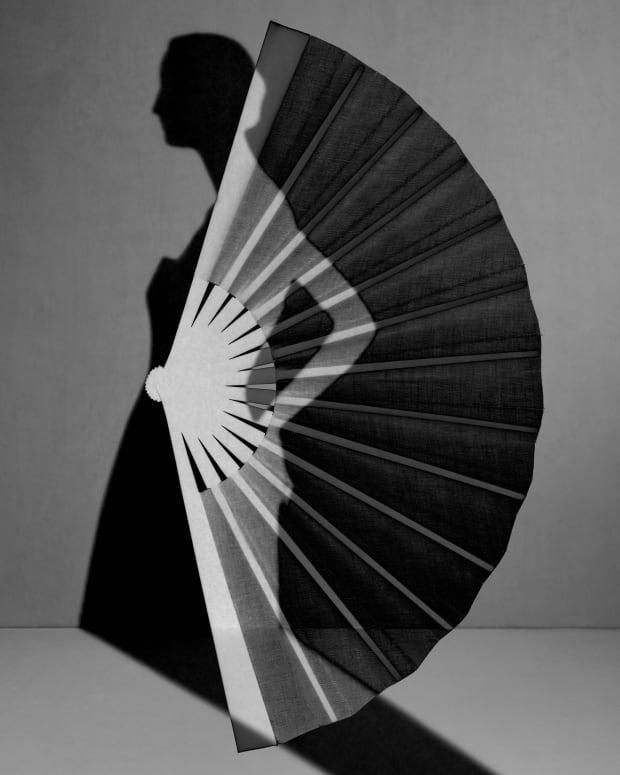
Photo: Julia Hetta/Courtesy of the Metropolitan Museum of Art
The Costume Institute doesn't endeavor to answer this, or even directly ask it. What Bolton does instead is focus on the art, almost exclusively.
"I don't believe in separating the two of them," Bolton told Fashionista at a press preview for the exhibit, ahead of its opening, "but I do believe in getting to know the man through the work." That's why, he explained, Lagerfeld himself is largely absent from the galleries, until the very end: "The idea was to encourage people to come to the show, put what they know about Karl behind them and try to get to know him through the work."
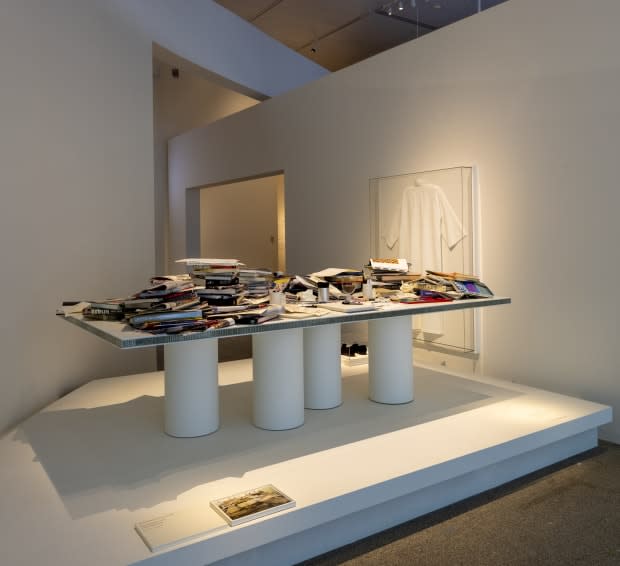
Photo: Courtesy of the Metropolitan Museum of Art
When visitors walk into the exhibition, they're greeted by videos of Lagerfeld sketching, only his (recognizable fingerless gloved) hand visible. After passing two looks — one by Chanel, one by Chloé, both from the '80s — with design elements calling back to the two "lines of beauty," they come across a recreation of Lagerfeld's book-, sketch- and art supply-littered desk, inspired by a photograph of the real thing.
Then, the Costume Institute reminds you that Lagerfeld didn't do it alone, projecting video interviews by Loïc Prigent with a few of the premières d'atelier behind some of the looks they worked on at Chloé, Fendi, Chanel and his namesake label. These were the people responsible for bringing those famous sketches into three dimensions, the ones who made the magic possible.
"When someone in the atelier has a difficult time making up one of my designs, even though I have never sewn, it is up to me to find the solution in three seconds," a quote attributed to Lagerfeld on the accompanying gallery wall reads.
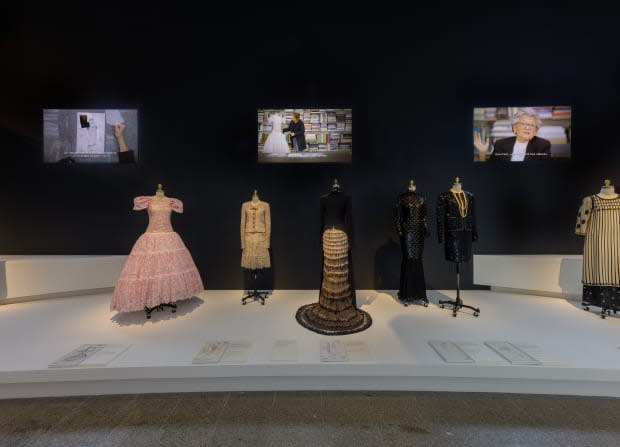
Photo: Courtesy of the Metropolitan Museum of Art
The premières d'atelier were part of the inspiration behind the framework for this exhibition. In an interview, Bolton recalled hearing from some of them at Lagerfeld's memorial service in 2019. "There were two moments that I felt [were] really touching: One was when I saw Karl sketching, where he was completely lost in his imagination... and the other was when the premières spoke about him and this really special, intimate relationship between them."
"There's so much that has been said about Karl, the man and the myth, which he created himself," he continued. "It was very easy to make judgments about him through what he said, what he wore, but I think the work is really his legacy."
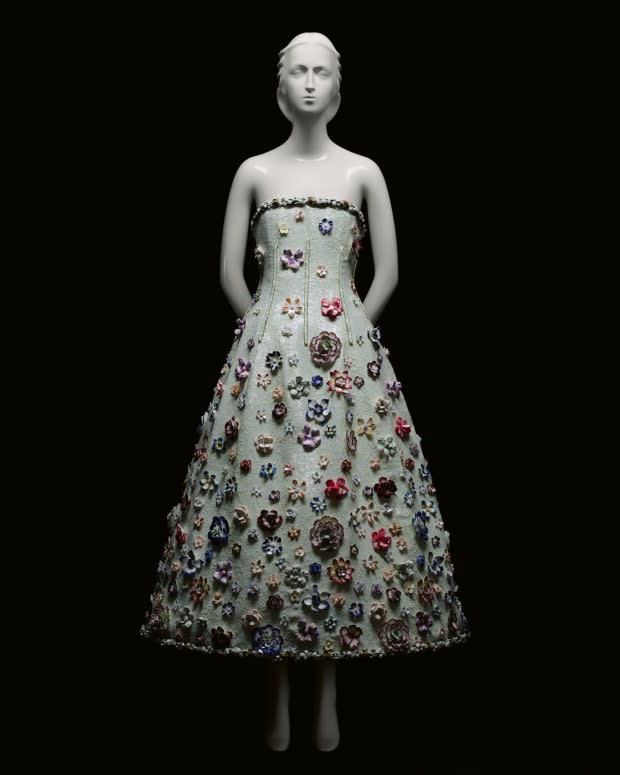
Photo: Courtesy of the Metropolitan Museum of Art
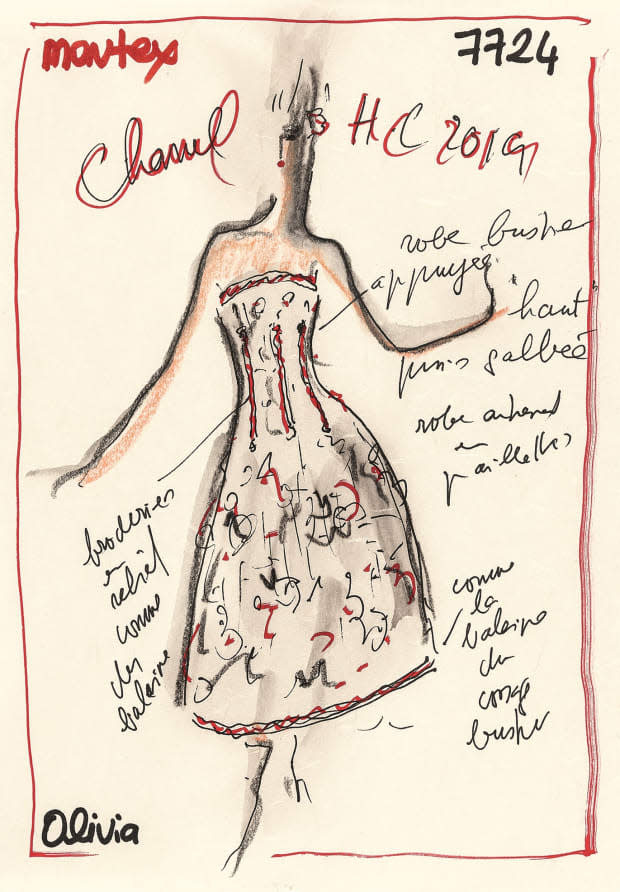
Photo: Courtesy of the Metropolitan Museum of Art
By focusing as much as possible on the pieces themselves (which, it must be said, are pretty spectacular, especially when you see the level of craftsmanship and detail up close) and presenting them as existing within these dualities, Bolton attempts to hold multiple truths at the same time. He acknowledged the hurt Lagerfeld, the man, caused: "Karl said things that were funny, that were incisive, that were very controversial and some, very offensive, which, obviously, we don't support." His goal with this, he explained, is to "get to the contradictions of Karl through the work."
The exhibition doesn't follow Lagerfeld's career chronologically (though there are pieces that mark key professional milestones, like the coat that won him the Woolmark Prize in 1954 and led to him landing the job at Balmain); instead, pieces from his time at all the houses he worked at are pieced together to illustrate these dualities.
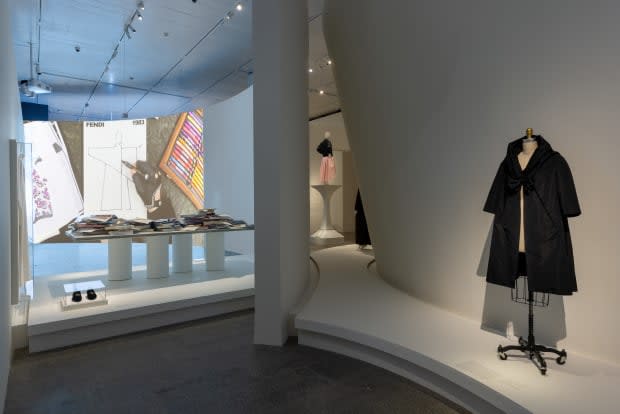
Photo: Courtesy of the Metropolitan Museum of Art
"I looked back through over 10,000 images, and I went to look at the archives — I've got this big board outside my office that I kept putting things on, and very, very quickly, the dualities became very prominent," he said. "By integrating those houses together, you look at the crossovers and the consistencies within those, and you've got a better sense of who he was."
In spite of these efforts to keep the focus on "the work," it's hard to push aside Lagerfeld, the man, when taking in the exhibition. The structure itself is a reference to him: There are 10 sections and nine dualities, to represent the day and month he was born. (Yup, he was a Virgo.)
It was always going to be difficult. Lagerfeld loomed large over fashion when he was alive — and he still does, his designs often cited by designers as inspiration (even when there's no "in honor of Karl" dress code) and pinned to mood boards to this day. Walking through the exhibition, you can understand why... but without some arguably necessary context.
People who follow the industry closely, who consume fashion voraciously, who have written about every single thing he said are well aware of the complicated reality of his legacy — but what about the average museum visitor who might stumble upon the exhibition, the fashion-curious, the person who hasn't been following the discourse, but is simply hoping to learn something new? For them, it's an incomplete portrait of a complicated figure. But there are some beautiful gowns.
"Karl Lagerfeld: A Line of Beauty" is on display at the Metropolitan Museum of Art in New York City from May 5 through July 16.
Never miss the latest fashion industry news. Sign up for the Fashionista daily newsletter.
